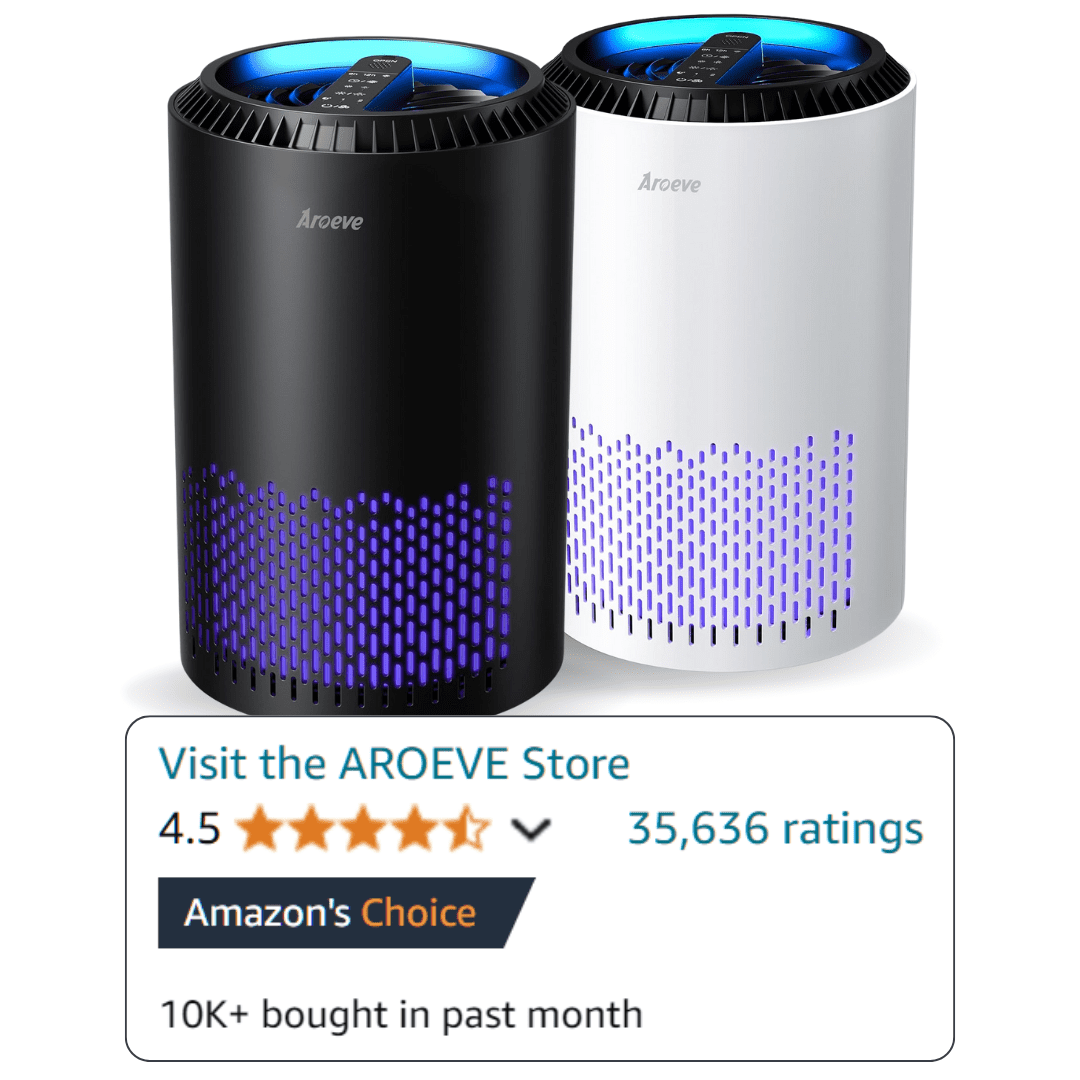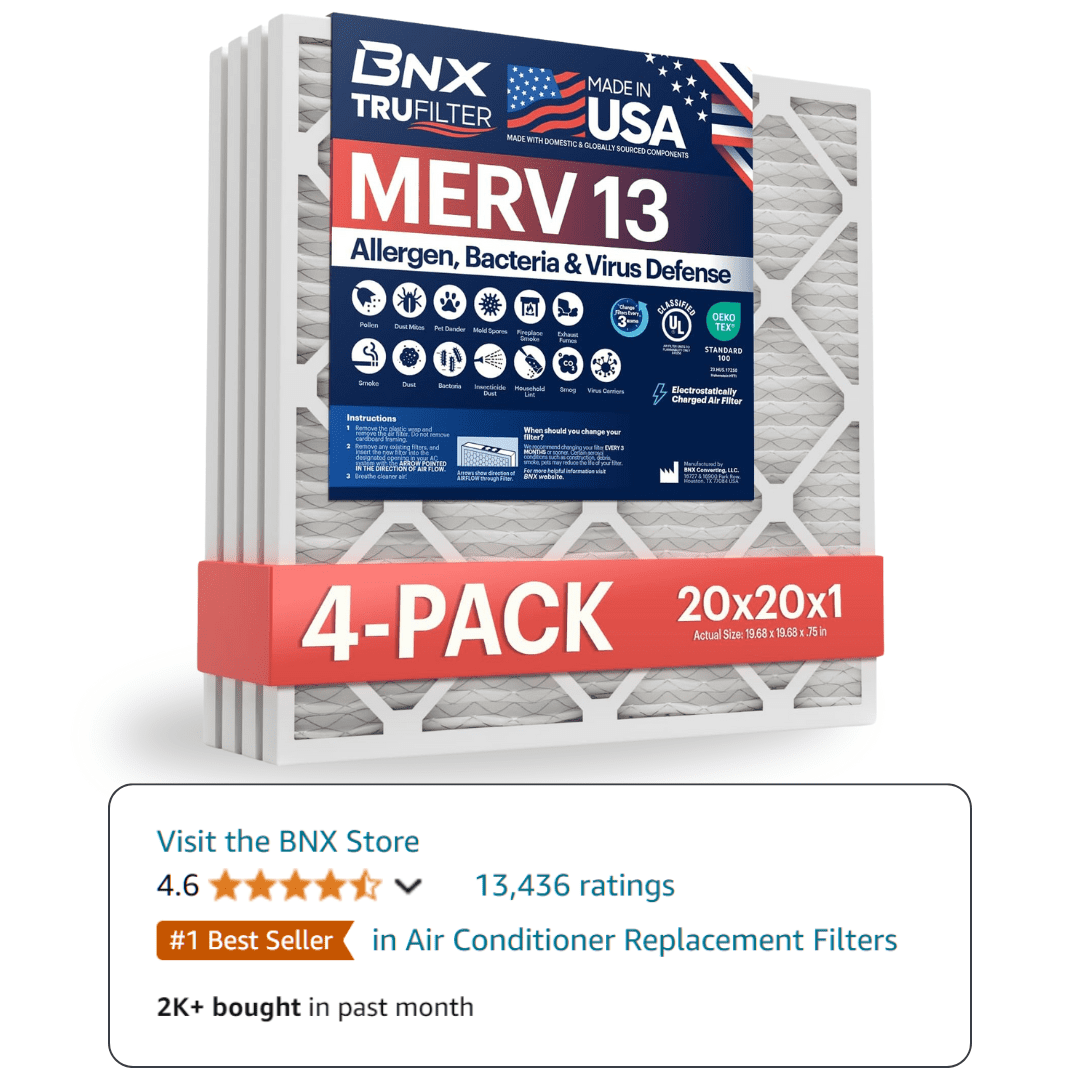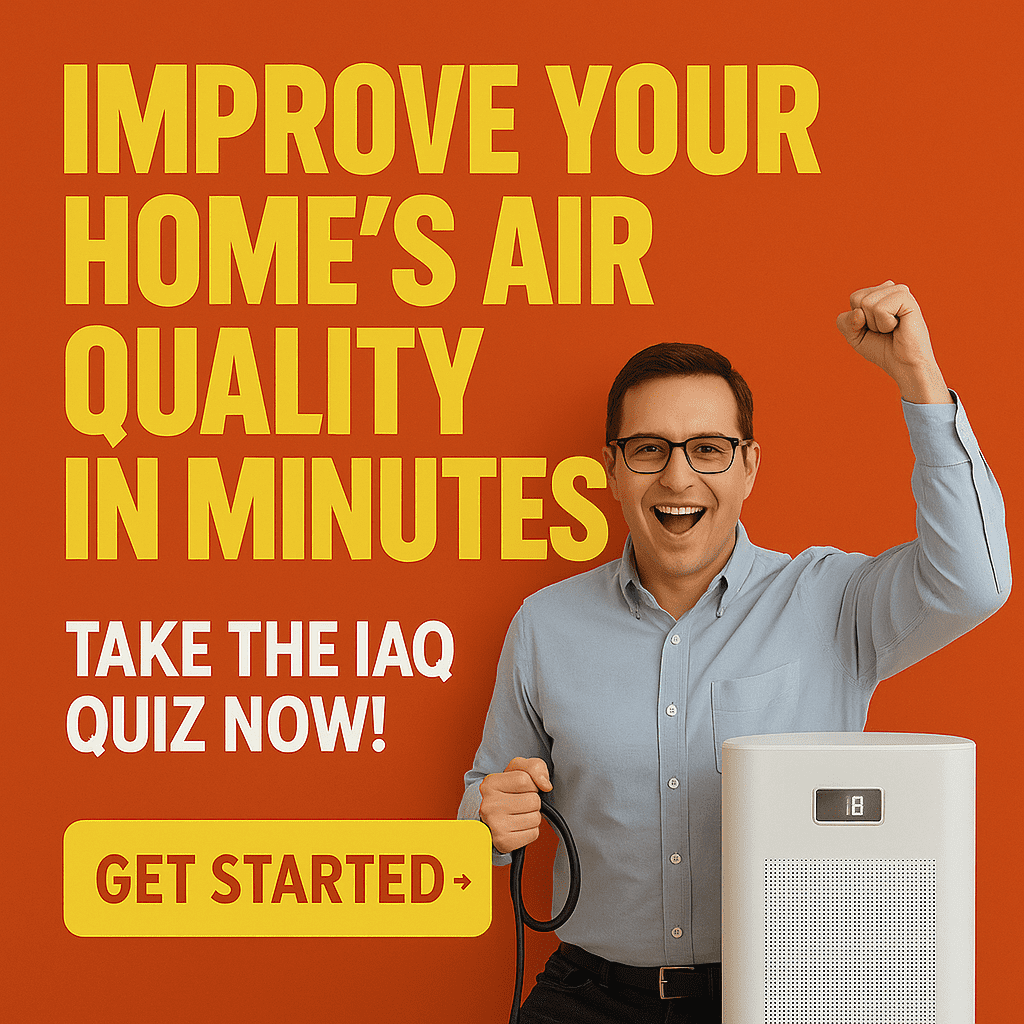Your HVAC system does more than control temperature. It’s the primary gateway for air circulation throughout your home, making it the most critical factor in your indoor air quality. Understanding how your heating and cooling system affects the air you breathe can transform your home’s health profile and your family’s wellbeing.
Understanding the HVAC-Air Quality Connection
How HVAC Systems Impact Indoor Air Quality
Your HVAC system moves thousands of cubic feet of air through your home daily. Every component in this system either improves or degrades your indoor air quality. The blower fan creates pressure differentials that pull air through filters, ductwork, and conditioning equipment before distributing it to living spaces.
Air filtration happens at the return air intake, where your system’s filter captures particles before they reach the equipment. The quality and efficiency of this filtration directly determines what pollutants remain in your circulated air. MERV 13 filters can remove particles as small as 0.3 microns, including bacteria, smoke, and fine dust.
The ductwork system acts as the circulatory network for your home’s air. Leaky ducts can introduce contaminants from crawl spaces, attics, or wall cavities. Dirty ducts accumulate dust, mold spores, and other pollutants that get redistributed with each system cycle.
Common Air Quality Problems Caused by Poor HVAC Maintenance
Neglected HVAC systems become pollution sources rather than air cleaners. Dirty filters restrict airflow and lose filtration efficiency, allowing particles to bypass the filter media entirely. When filters become completely clogged, air finds alternative paths through gaps in the filter frame or housing.
Moisture problems in HVAC systems create ideal conditions for mold growth. Condensate drain pans that don’t drain properly, dirty evaporator coils, and high humidity levels in ductwork all contribute to microbial contamination. These biological pollutants then spread throughout your home with each heating or cooling cycle.
Combustion appliances connected to your HVAC system can introduce carbon monoxide, nitrogen dioxide, and other combustion byproducts into your air supply. Cracked heat exchangers in gas furnaces pose serious health risks by allowing these dangerous gases to mix with your home’s air.
The Science Behind HVAC Air Circulation and Filtration
Air changes per hour (ACH) measures how completely your HVAC system replaces your home’s air. ASHRAE recommends 0.35 ACH for residential buildings, meaning your entire home’s air volume should be replaced every 2.9 hours. Higher ACH rates dilute indoor pollutants more effectively but require more energy.
Particle removal efficiency depends on filter media density, airflow velocity, and particle size. Larger particles get trapped through impaction when they collide with filter fibers. Smaller particles follow air streamlines until diffusion causes them to contact fiber surfaces. The most penetrating particle size (MPPS) around 0.3 microns requires the highest efficiency filters for effective capture.
Static pressure across your filter indicates restriction level. Clean filters typically show 0.1-0.3 inches of water column pressure drop. When pressure exceeds 0.5 inches, airflow reduction begins affecting system performance and air quality.
HVAC Components That Directly Affect Air Quality
Air Filters: Your First Line of Defense
Filter efficiency ratings determine what pollutants your HVAC system removes from circulated air. MERV ratings from 1-16 indicate minimum efficiency reporting values, with higher numbers capturing smaller particles. Residential systems typically use MERV 8-13 filters, while commercial buildings often require MERV 14-16 for enhanced protection.
Pleated filters offer more surface area than flat panel filters, extending service life and maintaining airflow. Electrostatic filters use charged fibers to attract particles but require regular washing to maintain effectiveness. HEPA filters achieve 99.97% efficiency at 0.3 microns but may restrict airflow in residential systems not designed for high-efficiency filtration.
Filter replacement frequency depends on local air quality, occupancy, and pets. Standard recommendations of 30-90 days often prove inadequate in dusty environments or homes with multiple pets. Monitor pressure drop across filters or inspect them monthly to determine actual replacement needs.
Ductwork: Hidden Air Quality Threats and Solutions
Duct leakage rates in typical homes range from 15-30% of total airflow. These leaks allow unconditioned air from attics, crawl spaces, or wall cavities to enter your air supply. Sealing ductwork with mastic or metal tape reduces contamination and improves system efficiency.
Duct cleaning removes accumulated debris but doesn’t address the root causes of contamination. HVAC maintenance including regular filter changes and moisture control prevents most duct contamination issues. Clean ducts with proper filtration stay clean longer than cleaned ducts with poor maintenance.
Duct insulation prevents condensation that leads to mold growth. Uninsulated ducts in unconditioned spaces create temperature differentials that cause moisture problems. Vapor barriers on duct insulation prevent moisture migration from surrounding air.
UV Light Systems: Germicidal Benefits and Installation
UV light technology uses ultraviolet-C radiation to destroy DNA in bacteria, viruses, and mold spores. UV lamps installed in HVAC systems target the evaporator coil area where moisture and organic matter create ideal conditions for microbial growth.
Germicidal effectiveness depends on UV dose, which combines intensity and exposure time. Air moving too quickly past UV lamps receives insufficient dose for complete sterilization. Proper sizing requires calculating air velocity and lamp output to achieve minimum 40,000 microwatt-seconds per square centimeter dose.
UV lamp placement affects performance and maintenance requirements. Coil sterilization lamps install downstream of the evaporator coil to prevent biofilm formation. Air sterilization lamps require straight duct sections for proper exposure and safety switches to prevent UV exposure during maintenance.
Humidity Control: Balancing Moisture for Optimal Air Quality
Humidity control affects both comfort and air quality. Relative humidity below 30% increases static electricity, respiratory irritation, and virus survival rates. Humidity above 60% promotes mold growth, dust mite reproduction, and chemical off-gassing from building materials.
Whole-home humidifiers integrate with HVAC systems to maintain consistent moisture levels throughout your home. Steam humidifiers provide precise control and don’t introduce minerals into your air supply. Evaporative humidifiers cost less but require regular maintenance to prevent bacterial growth.
Dehumidification removes excess moisture that promotes biological pollutant growth. Whole-home dehumidifiers work independently of your air conditioning system, providing moisture control even when cooling isn’t needed. Proper sizing requires calculating moisture loads from occupants, cooking, bathing, and outdoor air infiltration.
Ventilation Systems: Fresh Air Exchange Strategies
Mechanical ventilation systems provide controlled fresh air exchange to dilute indoor pollutants. Exhaust-only systems remove stale air but create negative pressure that can draw pollutants from soil, garages, or adjacent units. Supply-only systems pressurize homes but may introduce unconditioned outdoor air.
Balanced ventilation systems like energy recovery ventilators (ERVs) and heat recovery ventilators (HRVs) exchange stale indoor air for fresh outdoor air while recovering energy. ERVs transfer both heat and moisture, making them ideal for humid climates. HRVs transfer only heat, working better in dry climates.
Demand-controlled ventilation adjusts fresh air rates based on occupancy or CO2 levels. CO2 sensors trigger increased ventilation when levels exceed 1,000 ppm, indicating inadequate fresh air exchange. This approach saves energy while maintaining air quality.
Diagnosing Air Quality Issues Through Your HVAC System
Warning Signs Your HVAC is Compromising Air Quality
Persistent odors that return after cleaning indicate your HVAC system is circulating contaminated air. Musty smells suggest mold growth in ductwork or equipment. Chemical odors may indicate off-gassing from duct sealants, insulation, or cleaning products used in system maintenance.
Uneven dust accumulation throughout your home points to ductwork problems. Rooms with excessive dust may have leaky return ducts pulling in contaminated air. Rooms that stay cleaner may have restricted airflow due to blocked vents or damaged ductwork.
Health symptoms that improve when you leave home and worsen when you return suggest indoor air quality problems. Headaches, fatigue, respiratory irritation, and allergy symptoms that correlate with HVAC operation indicate system-related contamination.
DIY Testing Methods and Professional Assessment Tools
Visual inspection reveals obvious problems like dirty filters, mold growth on vents, or damaged ductwork. Check filter condition monthly and replace when visibly dirty or when pressure drop exceeds manufacturer specifications. Inspect accessible ductwork for damage, disconnections, or contamination.
Air quality testing provides objective data about your indoor environment. Particle counters measure PM2.5 and PM10 concentrations before and after filter changes to verify filtration effectiveness. CO2 monitors indicate ventilation adequacy, with levels consistently above 1,000 ppm suggesting insufficient fresh air.
Professional duct inspection using cameras reveals hidden problems in inaccessible areas. Duct blaster testing quantifies leakage rates and identifies specific leak locations. Microbial sampling determines if biological contamination requires remediation beyond routine cleaning.
Reading HVAC System Data for Air Quality Insights
Static pressure measurements across filters indicate restriction levels and replacement timing. Measure pressure drop with a manometer or digital gauge, comparing readings to manufacturer specifications. Increasing pressure drop over time shows filter loading and approaching replacement needs.
Airflow measurements at supply registers reveal distribution problems that affect air quality. Low airflow may indicate dirty filters, blocked ducts, or equipment problems. Unbalanced airflow creates pressure imbalances that can draw in contaminated air through building envelope leaks.
Temperature and humidity readings at supply and return locations show system performance and potential moisture problems. Large temperature differences may indicate dirty coils or restricted airflow. Humidity levels that vary significantly from setpoints suggest equipment sizing or control problems.
HVAC Upgrades for Better Indoor Air Quality
Cost-Benefit Analysis of Popular IAQ Upgrades
High-efficiency filtration upgrades typically cost $50-200 annually for filter replacements but can reduce particle concentrations by 50-90%. MERV 13 filters provide excellent particle removal for most homes without requiring system modifications. MERV 16 filters may require blower upgrades to maintain adequate airflow.
Whole home air purifiers integrate with existing ductwork to provide enhanced particle and gas removal. Electronic air cleaners cost $1,500-3,000 installed and remove particles down to 0.01 microns. Activated carbon filters add $500-1,500 to remove odors and chemical vapors.
UV light systems cost $800-2,500 installed and provide ongoing microbial control with minimal operating costs. Annual lamp replacement costs $100-300 depending on system size. Energy costs typically add $50-150 annually for continuous operation.
Whole-Home vs. Portable Solutions: Making the Right Choice
Whole-home solutions treat all air circulated by your HVAC system, providing consistent air quality throughout your home. Portable units only treat air in their immediate vicinity and require multiple units for whole-home coverage. The total cost of portable units often exceeds whole-home solutions while providing inferior coverage.
Integration with existing HVAC systems eliminates noise concerns and space requirements associated with portable units. Whole-home systems operate automatically without user intervention, while portable units require regular maintenance and positioning adjustments for optimal performance.
Maintenance requirements differ significantly between approaches. Whole-home systems typically require annual professional service and periodic filter or lamp replacement. Portable units need frequent filter changes, regular cleaning, and eventual replacement every 5-10 years.
Smart HVAC Integration for Continuous Air Quality Monitoring
Smart thermostats with air quality sensors automatically adjust ventilation rates based on indoor pollutant levels. These systems increase fresh air exchange when particle counts or VOC levels exceed preset thresholds. Integration with weather data prevents increased ventilation during high outdoor pollution periods.
Zoned air quality control allows different treatment levels for various areas of your home. Bedrooms may receive enhanced filtration for allergy sufferers, while kitchens get increased ventilation to remove cooking pollutants. Smart dampers and variable-speed equipment enable precise control over air distribution and treatment.
Remote monitoring capabilities alert you to filter replacement needs, equipment problems, or air quality issues. Smartphone apps display real-time air quality data and system performance metrics. Historical data tracking helps identify patterns and optimize system operation for your specific needs.
Industry Standards and Best Practices
ASHRAE Guidelines for HVAC Air Quality Management
ASHRAE Standard 62.2 establishes minimum ventilation requirements for residential buildings. The standard requires 0.35 ACH plus 7.5 CFM per person for adequate indoor air quality. These rates ensure sufficient dilution of occupant-generated pollutants while maintaining energy efficiency.
Filter selection guidelines in ASHRAE 52.2 provide standardized testing methods for air filter efficiency. The standard measures particle removal across 12 size ranges from 0.3 to 10 microns. Minimum efficiency reporting values (MERV) derived from this testing help specify appropriate filtration for different applications.
Humidity control recommendations maintain relative humidity between 30-60% for optimal comfort and air quality. Lower humidity increases respiratory irritation and static electricity. Higher humidity promotes mold growth and dust mite reproduction. Proper humidity control requires both humidification and dehumidification capabilities.
EPA Recommendations for Residential and Commercial Systems
EPA Indoor Air Quality guidelines emphasize source control as the most effective air quality strategy. Removing or reducing pollutant sources provides better results than trying to clean contaminated air after the fact. HVAC systems support source control by maintaining proper ventilation and humidity levels.
Particle filtration recommendations focus on MERV 13 or higher filters for enhanced protection against fine particles. The EPA specifically recommends higher efficiency filtration in areas with wildfire smoke, high outdoor pollution, or vulnerable occupants like children and elderly residents.
Ventilation guidelines stress the importance of balanced air exchange that doesn’t create pressure imbalances. Negative pressure can draw in soil gases, garage fumes, or other contaminants. Positive pressure may force conditioned air into wall cavities, creating moisture problems.
NAFA Standards for Air Filtration Excellence
NAFA (National Air Filtration Association) provides installation and maintenance standards that ensure optimal filter performance. Proper filter installation requires complete sealing around filter frames to prevent bypass airflow. Even small gaps can reduce system efficiency by 20-40%.
Filter sizing standards specify exact dimensions and tolerances for different applications. Undersized filters create bypass gaps, while oversized filters may not seat properly in their housings. Custom filter sizes ensure proper fit and maximum efficiency.
Maintenance protocols establish replacement schedules based on actual operating conditions rather than arbitrary time intervals. Pressure drop monitoring provides objective data for replacement timing. Visual inspection guidelines help identify filter damage or improper installation that compromises performance.
Real-World Case Studies and Results
Residential HVAC Air Quality Transformation
A 2,400 square foot home in Phoenix experienced persistent allergy symptoms despite regular cleaning. Air quality testing revealed PM2.5 levels averaging 35 μg/m³, well above the EPA’s 12 μg/m³ annual standard. The existing MERV 8 filter and leaky ductwork allowed fine particles to circulate continuously.
HVAC upgrades included MERV 13 filtration, duct sealing, and UV light installation on the evaporator coil. Post-upgrade testing showed PM2.5 levels dropped to 8 μg/m³, a 77% reduction. The family reported significant improvement in allergy symptoms within two weeks of the upgrades.
Total upgrade cost was $3,200 including professional installation. Annual operating costs increased by $180 for higher-efficiency filters and UV lamp replacement. The homeowners calculated a return on investment through reduced medical expenses and improved quality of life within 18 months.
Commercial Building Success Stories
A 50,000 square foot office building struggled with employee complaints about stuffy air and frequent illness. Building management upgraded from MERV 8 to MERV 14 filtration and installed demand-controlled ventilation based on CO2 monitoring. The system automatically increases fresh air exchange when occupancy levels rise.
Indoor CO2 levels dropped from an average of 1,200 ppm to 800 ppm during peak occupancy. Employee sick days decreased by 23% in the first year following upgrades. Productivity metrics improved as employees reported better concentration and fewer headaches.
The $45,000 upgrade investment paid for itself through reduced sick leave costs and improved productivity within 2.5 years. Energy costs increased by 12% due to additional ventilation, but this was offset by reduced maintenance costs from cleaner equipment operation.
ROI Analysis: Measuring Air Quality Improvements
Quantifying air quality improvements requires baseline measurements before upgrades and follow-up testing after implementation. Key metrics include particle counts, VOC levels, CO2 concentrations, and humidity readings. Professional testing provides accurate data for calculating improvement percentages.
Health benefits translate to economic value through reduced medical expenses, fewer sick days, and improved sleep quality. Families with asthma or allergies often see the most dramatic improvements and fastest payback periods. Energy savings from improved system efficiency can offset some upgrade costs.
Property value increases from documented air quality improvements average 2-5% in markets where buyers prioritize health features. Professional IAQ experts can provide certification documentation that supports higher resale values.
Frequently Asked Questions
How does my HVAC system affect indoor air quality?
Your HVAC system circulates air throughout your home, filtering particles and controlling humidity with each cycle. The quality of filtration, condition of ductwork, and ventilation rates directly determine your indoor air quality. Poor maintenance turns your HVAC system from an air cleaner into a pollution distributor.
What HVAC upgrades provide the best air quality improvements?
High-efficiency filtration (MERV 13 or higher) provides the most cost-effective improvement for most homes. UV light systems add microbial control, while whole-home air purifiers address gases and odors. Duct sealing and proper ventilation complete a comprehensive approach.
How often should I change my HVAC filter for optimal air quality?
Monitor pressure drop across your filter rather than following arbitrary time schedules. Replace filters when pressure exceeds 0.5 inches of water column or when visual inspection shows significant dirt accumulation. This typically ranges from 30-90 days depending on local conditions and filter efficiency.
Can my HVAC system remove allergens and pollutants?
HVAC systems with proper filtration remove most airborne allergens including pollen, pet dander, and dust mites. MERV 13 filters capture particles down to 0.3 microns, including most biological allergens. Additional equipment like UV lights and air purifiers enhance removal of gases and microorganisms.
What’s the difference between HVAC air purification and standalone units?
HVAC-integrated systems treat all circulated air automatically, providing consistent whole-home coverage. Portable units only clean air in their immediate vicinity and require multiple units for complete coverage. Whole-home systems typically cost less than multiple portable units while providing superior performance.
How do I know if my HVAC system is causing air quality problems?
Watch for persistent odors, uneven dust accumulation, or health symptoms that correlate with system operation. Professional air quality testing provides objective data about particle levels, humidity, and chemical concentrations. Pressure testing reveals duct leakage that introduces contaminants.
What MERV rating should I use for better air quality?
MERV 13 filters provide excellent particle removal for most residential applications without restricting airflow. Higher ratings like MERV 16 may require system modifications to maintain adequate airflow. Consider your specific needs including allergies, pets, and local air quality when selecting filter efficiency.
Do UV lights in HVAC systems really improve air quality?
UV lights effectively destroy bacteria, viruses, and mold spores when properly sized and installed. They’re particularly effective at preventing microbial growth on evaporator coils and in ductwork. However, UV lights don’t remove particles or chemical pollutants, making them a supplement to, not replacement for, good filtration.
How much does it cost to upgrade HVAC for better air quality?
Basic upgrades like high-efficiency filters cost $50-200 annually. UV light systems range from $800-2,500 installed. Whole-home air purifiers cost $1,500-5,000 depending on technology and home size. Duct sealing typically costs $1,500-3,500 but provides both air quality and energy benefits.
What are ASHRAE standards for HVAC air quality?
ASHRAE Standard 62.2 requires 0.35 air changes per hour plus 7.5 CFM per person for residential ventilation. Standard 52.2 establishes filter testing methods and MERV ratings. These standards provide minimum requirements, and many homes benefit from exceeding these recommendations based on specific air quality needs.




